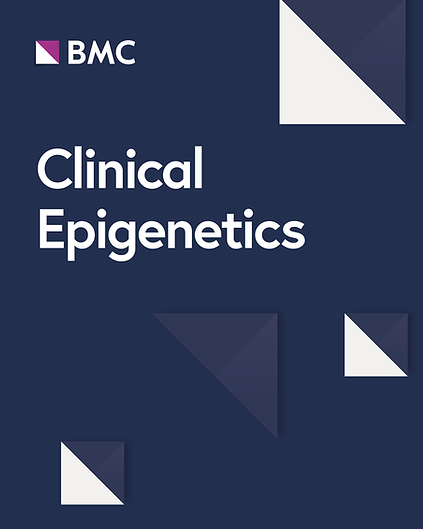血清 GDF15 和 NT-proBNP 水平的 DNAm 分数与影响身体和大脑的一系列特征有关
IF 4.8
2区 医学
Q1 GENETICS & HEREDITY
引用次数: 0
摘要
血浆生长分化因子 15(GDF15)和 N 端前 B 型钠尿肽(NT-proBNP)是与一系列疾病相关的心血管生物标志物。GDF15和NT-proBNP的表观遗传评分(EpiScores)可为风险分层提供新的途径。在苏格兰世代队列(N ≥ 16963)中,GDF15 水平与痴呆症、缺血性中风和 2 型糖尿病的发病相关,而 NT-proBNP 水平分别与缺血性心脏病、缺血性中风和 2 型糖尿病的发病相关(PFDR 均为 95%)。GDF15 和 NT-proBNP 的 EpiScores 在人群的一个子集中进行了训练。在 "苏格兰一代 "测试集中,GDF15 EpiScore 重复了蛋白质与痴呆症、2 型糖尿病和缺血性中风的关系(危险比 (HR) 范围为 1.36-1.41,PFDR < 0.05)。NT-proBNP的EpiScore复制了蛋白质与2型糖尿病的关联,但未能复制与缺血性中风的关联。EpiScore 对苏格兰一代测试集和 LBC1936 外部测试队列中蛋白质水平差异的解释能力相当(R2 范围为 5.7-12.2%)。在 LBC1936 中,两个 EpiScore 都与较差的大脑健康指标相关。在LBC1936人群中,两项EpiScore均与痴呆症的发生无关。血清中 GDF15 和 Nt-proBNP 水平的 EpiScores 与身体和大脑健康特征相关。这些 EpiScores 可作为疾病风险分层的潜在工具。本文章由计算机程序翻译,如有差异,请以英文原文为准。
DNAm scores for serum GDF15 and NT-proBNP levels associate with a range of traits affecting the body and brain
Plasma growth differentiation factor 15 (GDF15) and N‐terminal proB‐type natriuretic peptide (NT‐proBNP) are cardiovascular biomarkers that associate with a range of diseases. Epigenetic scores (EpiScores) for GDF15 and NT-proBNP may provide new routes for risk stratification. In the Generation Scotland cohort (N ≥ 16,963), GDF15 levels were associated with incident dementia, ischaemic stroke and type 2 diabetes, whereas NT-proBNP levels were associated with incident ischaemic heart disease, ischaemic stroke and type 2 diabetes (all PFDR < 0.05). Bayesian epigenome-wide association studies (EWAS) identified 12 and 4 DNA methylation (DNAm) CpG sites associated (Posterior Inclusion Probability [PIP] > 95%) with levels of GDF15 and NT-proBNP, respectively. EpiScores for GDF15 and NT-proBNP were trained in a subset of the population. The GDF15 EpiScore replicated protein associations with incident dementia, type 2 diabetes and ischaemic stroke in the Generation Scotland test set (hazard ratios (HR) range 1.36–1.41, PFDR < 0.05). The EpiScore for NT-proBNP replicated the protein association with type 2 diabetes, but failed to replicate an association with ischaemic stroke. EpiScores explained comparable variance in protein levels across both the Generation Scotland test set and the external LBC1936 test cohort (R2 range of 5.7–12.2%). In LBC1936, both EpiScores were associated with indicators of poorer brain health. Neither EpiScore was associated with incident dementia in the LBC1936 population. EpiScores for serum levels of GDF15 and Nt-proBNP associate with body and brain health traits. These EpiScores are provided as potential tools for disease risk stratification.
求助全文
通过发布文献求助,成功后即可免费获取论文全文。
去求助
来源期刊

Clinical Epigenetics
ONCOLOGY-
自引率
5.30%
发文量
150
期刊介绍:
Clinical Epigenetics, the official journal of the Clinical Epigenetics Society, is an open access, peer-reviewed journal that encompasses all aspects of epigenetic principles and mechanisms in relation to human disease, diagnosis and therapy. Clinical trials and research in disease model organisms are particularly welcome.
 求助内容:
求助内容: 应助结果提醒方式:
应助结果提醒方式:


